Why I’d Choose the 36mm Rolex Land-Dweller over the 40mm Version
It's entirely subjective, but I personally think the smaller the better for this watch.
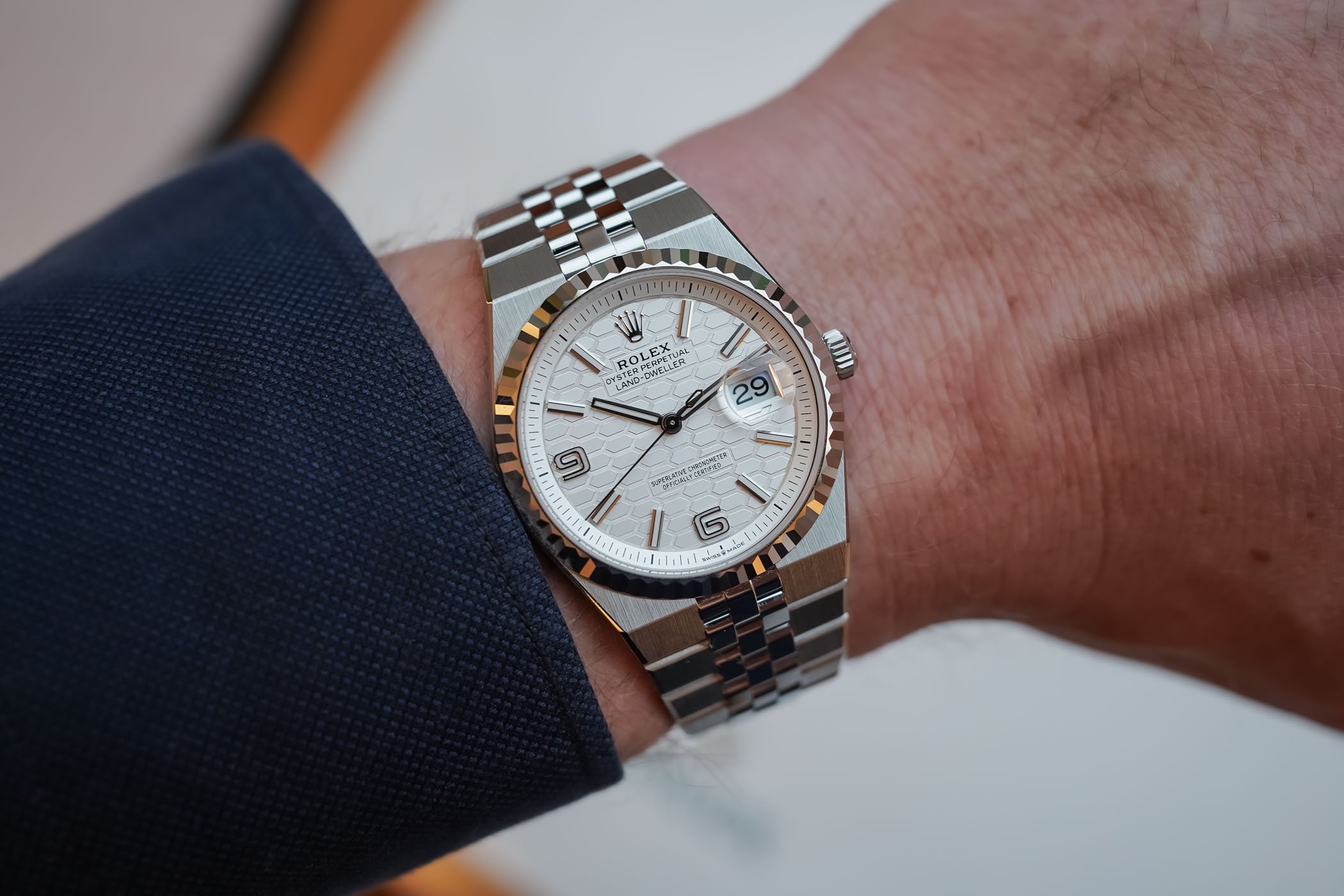
As of now, you certainly know everything there is to know about Rolex’s latest collection, a watch that made great noise during its presentation at Watches & Wonders 2025, the Land-Dweller. Quite a surprise, both visually and mechanically (mostly mechanically), the collection has been quite a hot topic of discussion, with divided opinions amongst the watch community. We’ve talked about the watch at length and also explained its innovative escapement. Now is not the time to rewrite the story entirely again. Now is the time for me to be personal, subjective (and maybe unpopular). But I do believe that the Rolex Land-Dweller 36mm version is the one to go for. And yes, you’re allowed to disagree.
Rolex’s latest creation is a watch that’s entirely new and at the same time very familiar. What else to expect from Rolex, a watchmaking company that was known for its extreme conservatism, even though recent years have shown that the Crown was changing. Rolex is more creative, less expected, and far bolder in some areas. Certainly, the most emblematic models remain as timeless as possible – an Explorer or a Submariner are just as classic as they can be – but even in normally fairly traditional ranges such as the GMT-Master II or the Oyster Perpetual, Rolex has demonstrated a certain creativity.
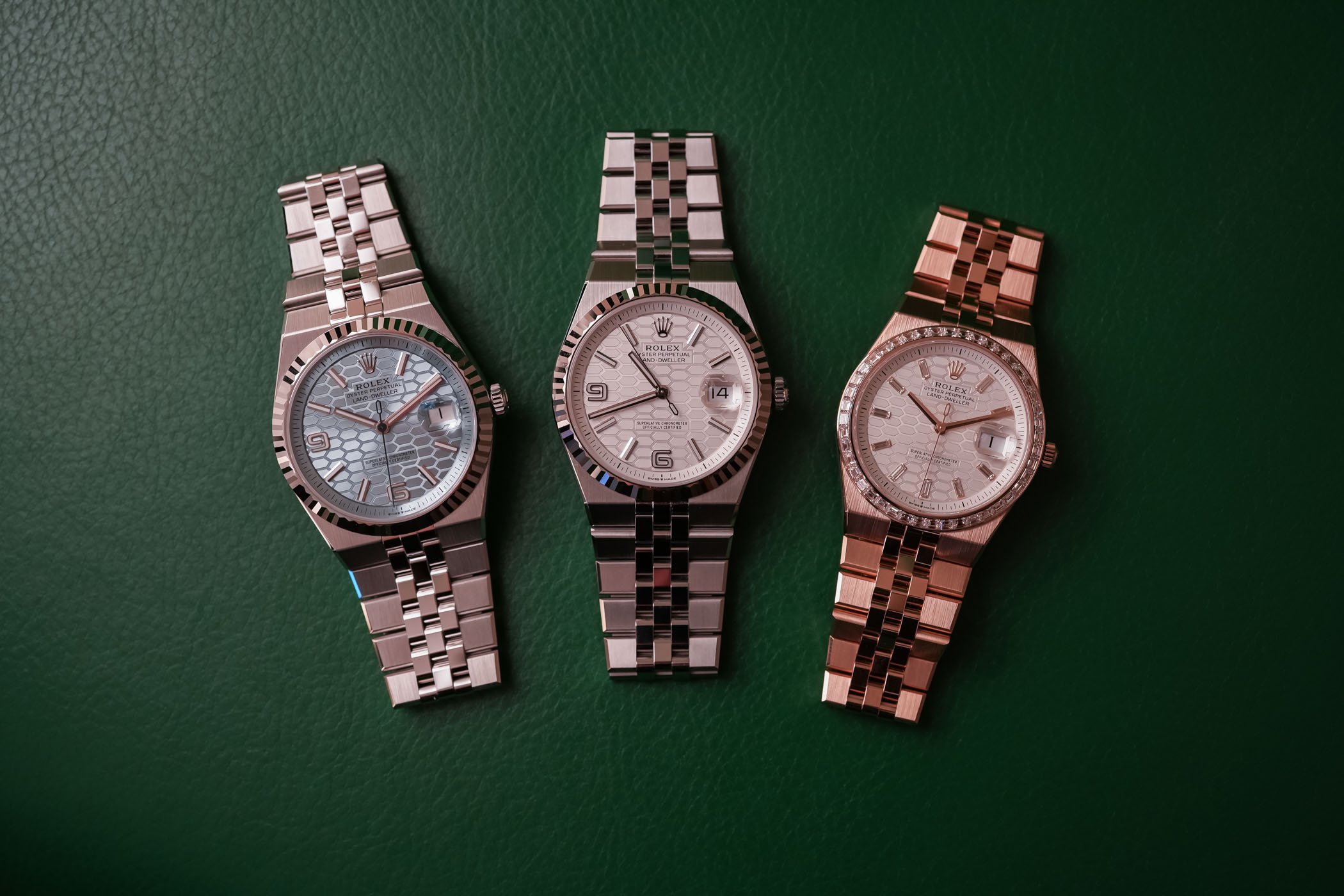
With the Land-Dweller, Rolex enters the coveted category of the elegant sports watch with integrated bracelet. Or, to be precise, it re-enters the category. As we’ve explained in this article, the Land-Dweller doesn’t entirely come out of the blue and is strongly inspired by 1970s watches such as the Datejust reference 1630 and the Oysterquartz. What is true also is that I wasn’t personally hooked at first sight. When the watch was introduced on April 1st, 2025, at precisely midnight, all we had to make our own judgment were the official renderings, which we know can be quite deceptive. At first, I thought the watch lacked the refinement of some of its potential competitors. Sure, the collection isn’t positioned as an alternative to the Royal Oak Jumbo or the Nautilus, both far more expensive and thinner, but it remains a high-end watch that sits in-between the Datejust on one side and the Day-Date and Sky-Dweller on the other.
Potential alternatives, watches positioned in the same category and in an identical price bracket, are the IWC Ingenieur, the Chopard Alpine Eagle or the GP Laureato. Then, you start to realise that the Land-Dweller actually has some serious arguments. But that’s not the point of this article. As said, it wasn’t love at first sight for me. Maybe it’s the fact that we’re so used to seeing a Rolex with classic lugs and an Oyster or Jubilee bracelet. Maybe it’s the fact that the 3D renderings emphasised all the textures and made the watch look more polarising than what it really is. Maybe it’s the fact that most of the campaign was focused on the 40mm edition.
A few hours after the initial presentation, the MONOCHROME team had the chance to go hands-on with the collection. But keep in mind that a meeting at Watches & Wonders lasts for about an hour, during which we get to see all the new models. Not the most ideal way to judge a watch, you’ll admit. Then again, on the three models we have the opportunity to photograph, two of them were 40mm editions (steel and platinum), and the third one was an Everose gold version with diamonds. But we recently had the chance to spend more time with the entire collection, including identical versions of the watch in 36mm and 40mm.
So now, I must admit that I’m starting to warm up to the watch. Quite a lot, actually. It took me some time to get used to it, and now I have to add to the equation the fact that seeing classic (no diamond) editions of the Land-Dweller in Oystersteel and Everose gold, both in 36mm, even reinforced my opinion. Yes, I have to say it, the most compact version is the one I’d choose. Why? Several reasons that all have to do with size and proportions, as well as elegance.
The not-so-perfect (to me) 40mm edition
But first, let me tell you why I wouldn’t choose the 40mm version. Again, this is all personal; however, one of the gripes I expressed in my review of the entire collection here was the fact that this watch has a lot of textures. It combines a complex bracelet with multiple links, a fluted bezel with less flutes than normally found on a DD or DJ (60 vs. 72 flutes, making them larger) and a dial with a lot going on: a honeycomb pattern, fine guilloche-like texture between the combs, a graduated inner bezel, large applied numerals and elongated markers, texts printed with cartouches… If you combine all of these elements within a fairly large watch of 40mm, it gives quite a striking result.

Secondly, 40mm is usually the norm at Rolex for men’s watches (Submariner, GMT-Master II, Daytona, Day-Date). And, in most watches, this diameter works perfectly, except in the Explorer 1 maybe, where the 36mm seems more appropriate. With the Land-Dweller, despite a short L2L measurement, the watch felt quite “present” on my wrist. It might be due to the tonneau shape of the case, adding some surface area, or the combination with an integrated bracelet. My last comment has to do with comfort, and it is something I share with my colleague Robin. Something that happens often to me with watches of this category (Royal Oak 41mm, PRX 40mm): there’s a gap between my wrist and the place where the case and the bracelet connect. I thought it had to do with the fact that I have small wrists (16.5cm), but Robin, who’s far from being short (over 2 metres in height and with 18cm wrists), also experienced an identical issue (less than me, to be fair). Below, a comparison of both watches on the wrist of our editor Robin – 40mm on the left, 36mm on the right.
The appeal of the 36mm Land-Dweller
So, having this in mind, the 36mm Land-Dweller felt like a rather different experience. When seeing the two sizes of this watch together, you might have the idea that the 36mm feels petite, maybe too delicate and, in a certain measure, maybe a bit feminine. However, this changed when Robin and I tried it on the wrist. As surprising as it might sound, this compact watch fits beautifully on his wrist, and you can see it here as he’s the one modelling in the wristshot images. And keep in mind that, even within our team, not all agree. Our founder Frank prefers the 40mm edition, and he didn’t experience any issue regarding comfort.
Let me put it in words. One, the 36mm Land-Dweller is basically a shrunk version of the 40mm, in every single aspect. This has multiple consequences, the first being the visual presence of all the textures. For instance, while the bezel retains its 60 flutes, its thickness is reduced and, accordingly, the width of the flutes, making it less blatant. Second, the exact same goes for the dial. There are as many combs, and the texture is identical, making it less striking. And this has to be combined with the reduced size of all the elements of the dial: hands, markers, printings, width of the inner flange. Altogether, there’s more balance and refinement in this version, which nevertheless retains the same thickness of 9.70mm, but a length of 43.5mm.
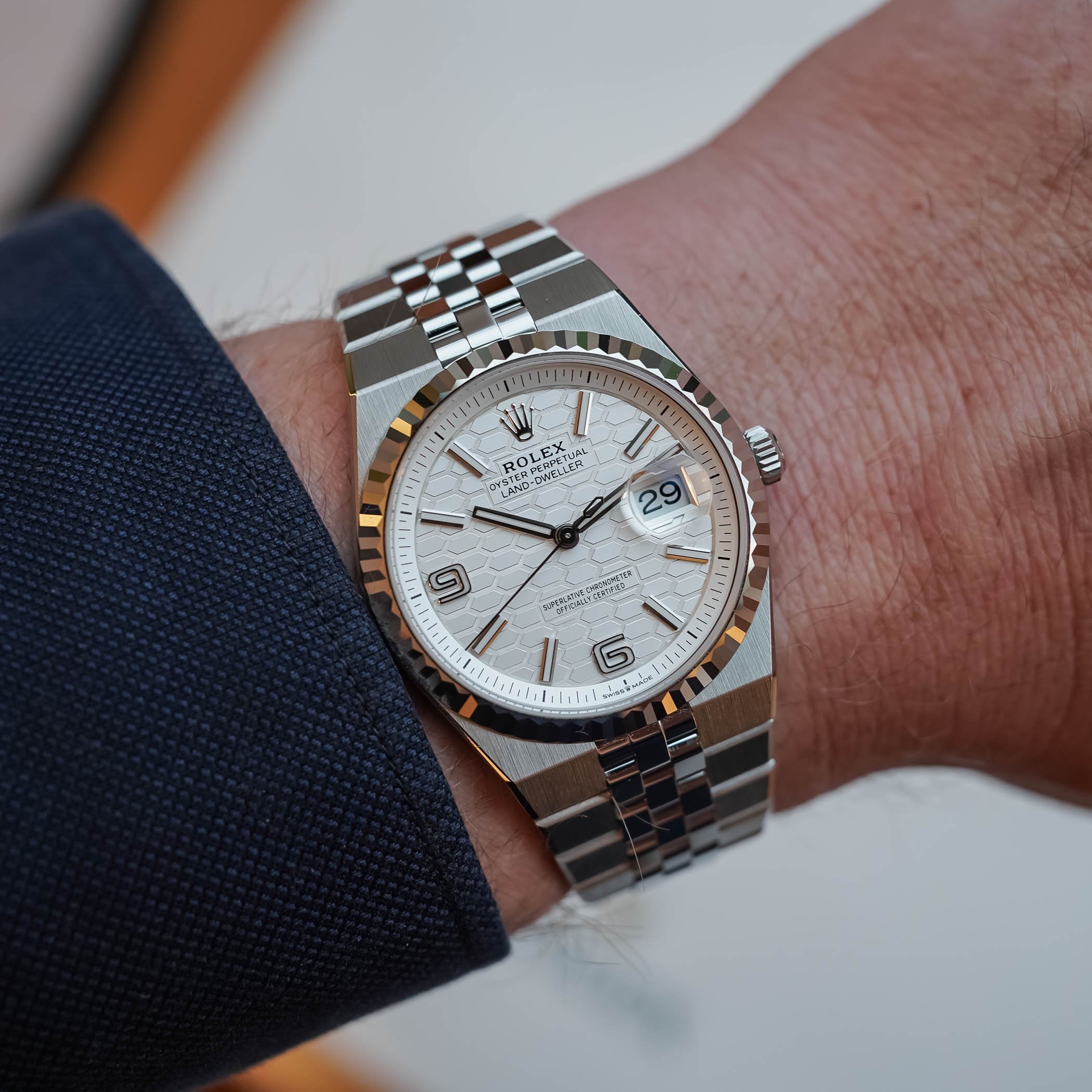
Next: comfort and size. Some might argue that 36mm is too small for a man. I’m not here to debate your preferences. I do agree that some watches work best in larger sizes. That said, the Land-Dweller gave me the same impression as an Explorer 1; the 36mm feels more appropriate than the 40mm, at least in my eyes. The Land-Dweller is, after all, a watch with a more elegant vocation than a Submariner. On Robin’s wrist, and as you can guess on my small wrist too, the watch does something that we have somehow forgotten… The bracelet nicely rolls around the wrist. How often do we see watches where the bracelet falls straight at the tip of the lugs? Here, it doesn’t, and it also means that the gap under the case is gone.
Altogether, the 36mm diameter was beneficial to both comfort and style – for me at least. There’s more visual balance, due to a dial that feels more appropriately dimensioned, with less empty spaces but also less interference from the multitude of textures. It just feels a bit more right. And, as a more versatile option than anything you’ll find from the Professional line, the 36mm simple has more refinement, more discretion. I simply prefer it over the 40mm version, for it to have more of the classic, old-school Rolex proportions (ps. my choice of a 36mm version over a 40mm model would also be true for a Day-Date).
Last but not least, and it’s more of a bonus for the 36mm Land-Dweller than a deal breaker against the 40mm edition, I like the fact that both sizes use the exact same movement, meaning that the 36mm comes with the lovely effect of a calibre that fills nicely the case. It’s also pleasant to see a large movement in a compact watch, without a huge metal ring around it.

Does that mean that everything is perfect in the 36mm Rolex Land-Dweller? No. I would love to see what this watch looks like with a darker dial colour (dark blue, anthracite grey), since the white dial isn’t the most appealing to me. I would also love to see a version with a smooth bezel. Maybe it’ll look awful, maybe not. I guess we’ll have to wait for our yearly Rolex predictions to see what it could look like.

For now, let us know in the comments which version you think is the best for this new Rolex Land-Dweller collection. As you’ve understood, my choice is the 36mm edition. And I think I’m not going to be the only one, not only because of the trend for smaller watches, but also because this LD indeed looks very good in this smaller size. To each his own, of course.

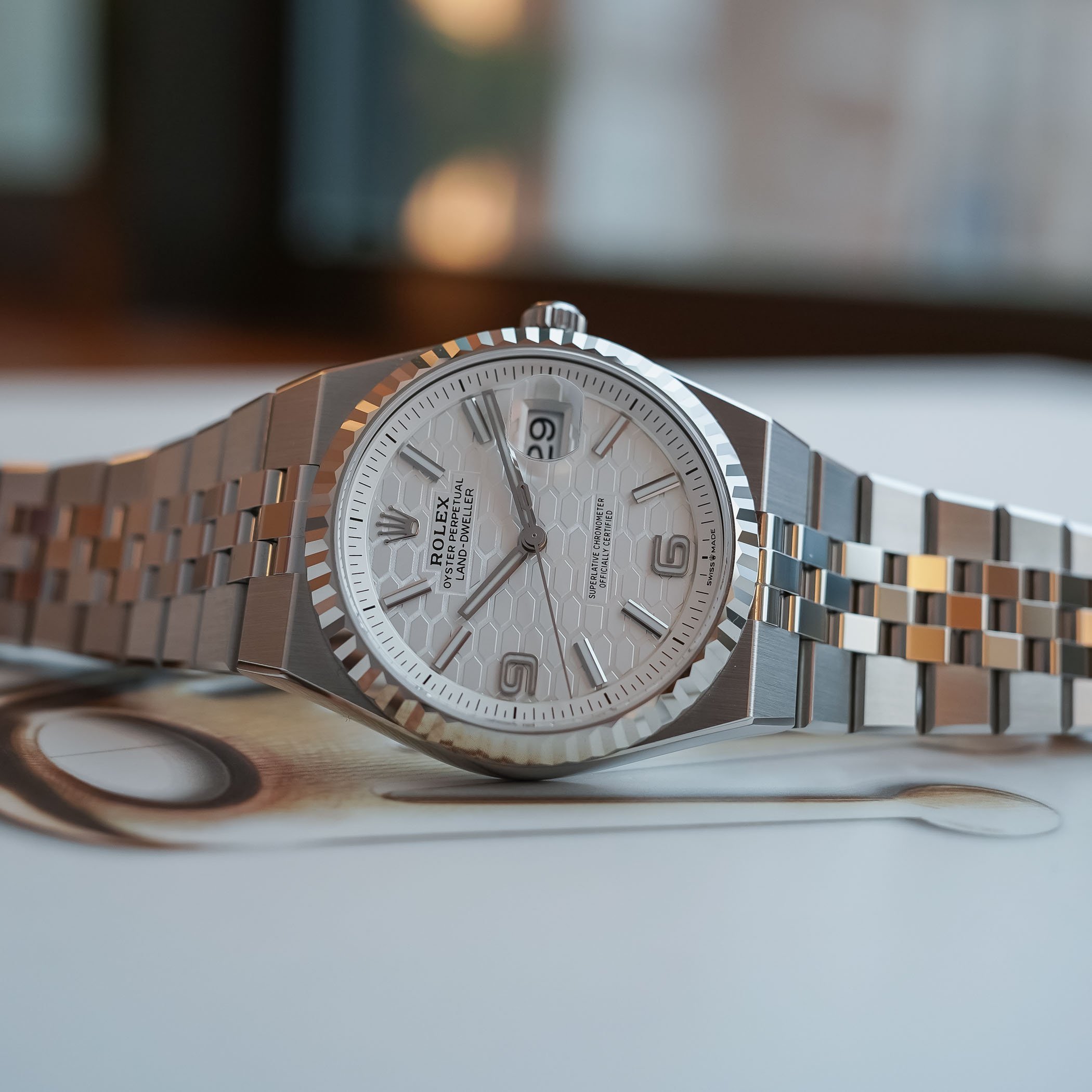
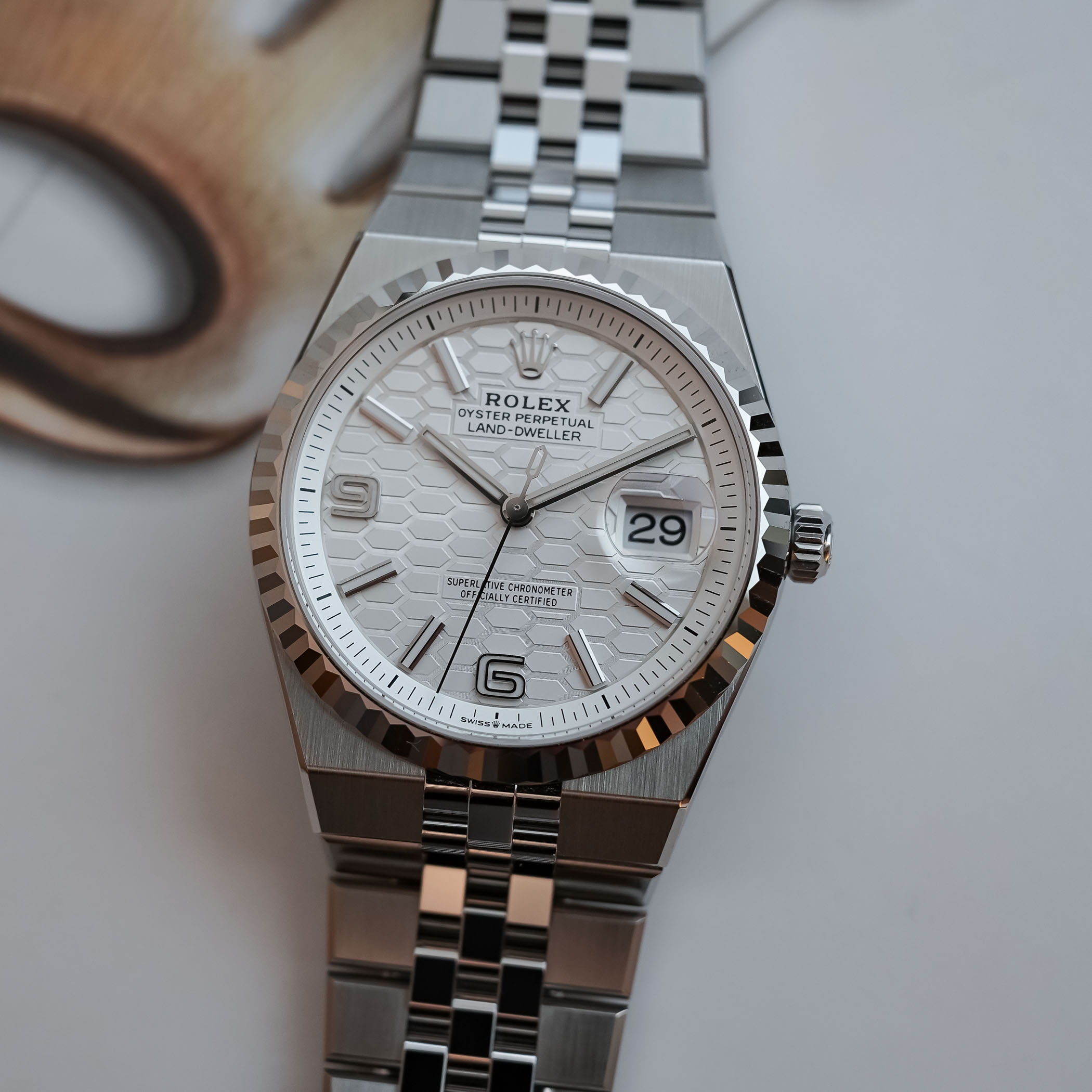
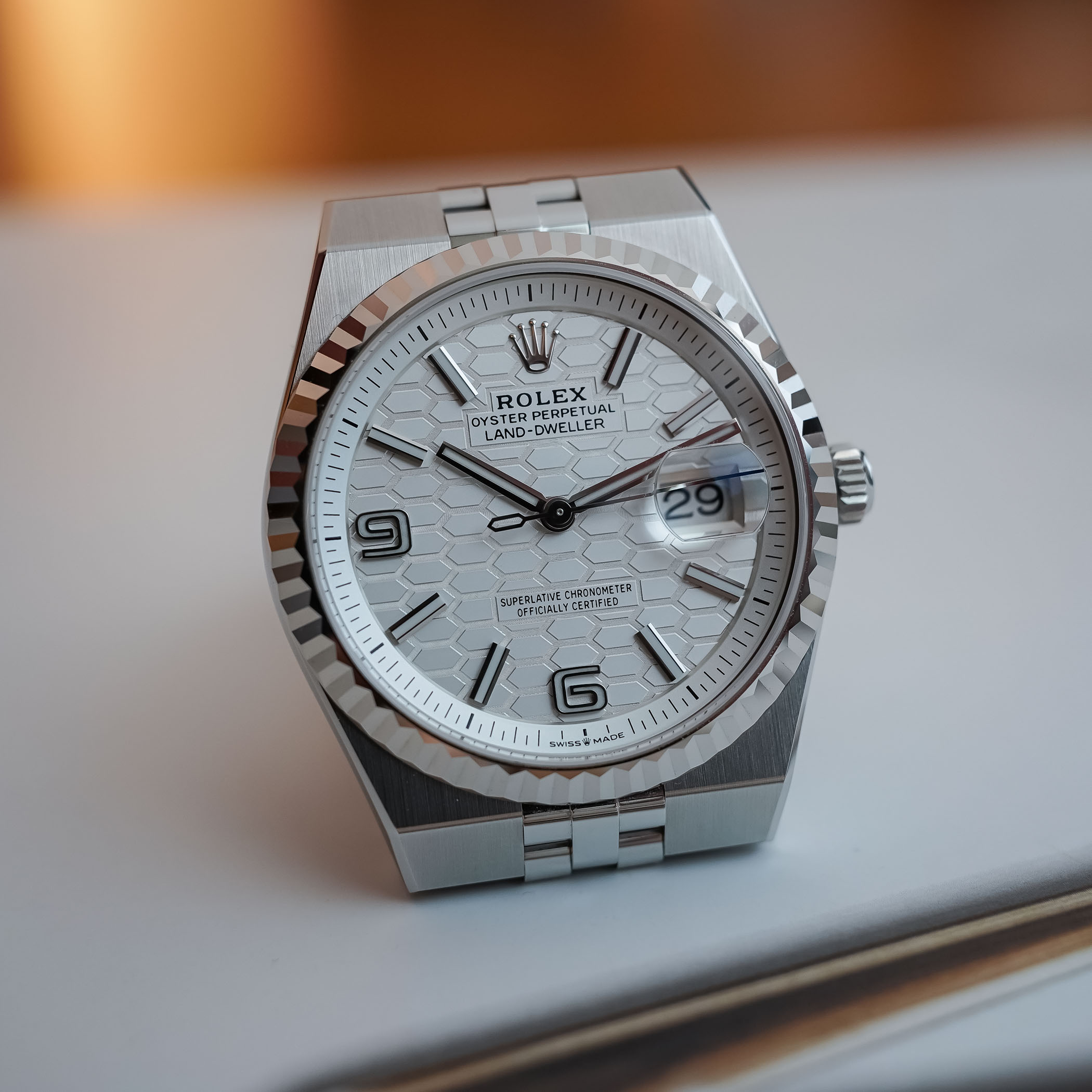
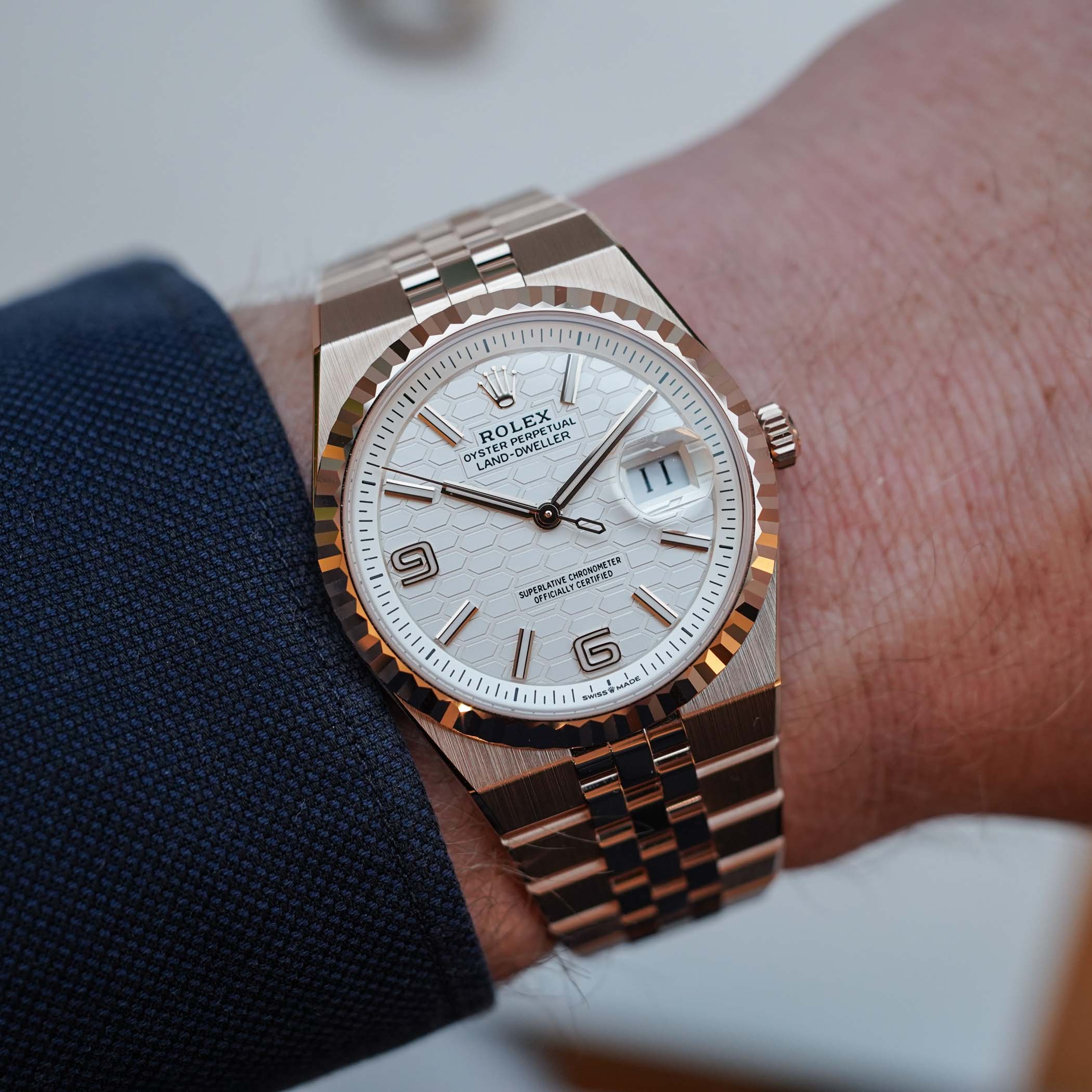
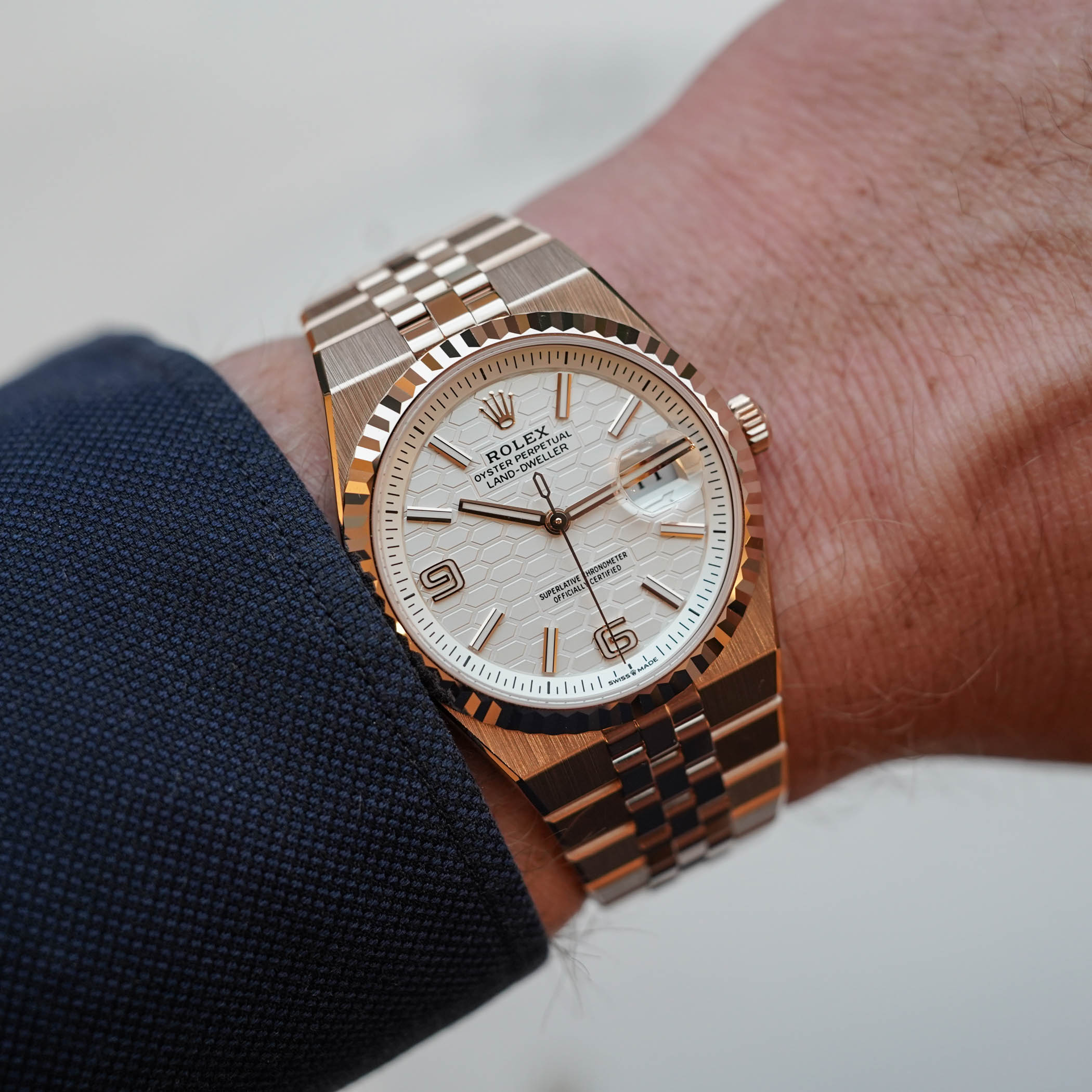

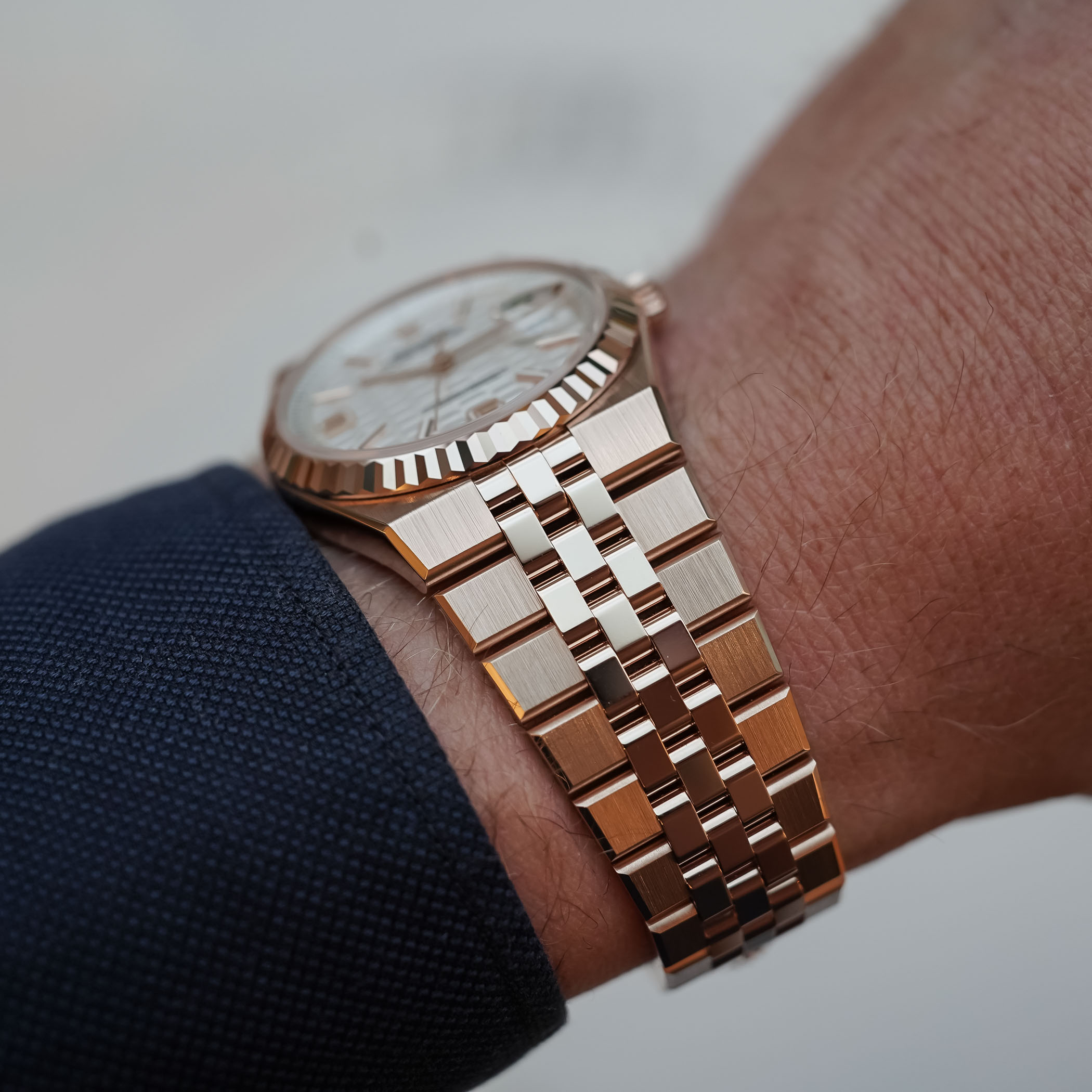
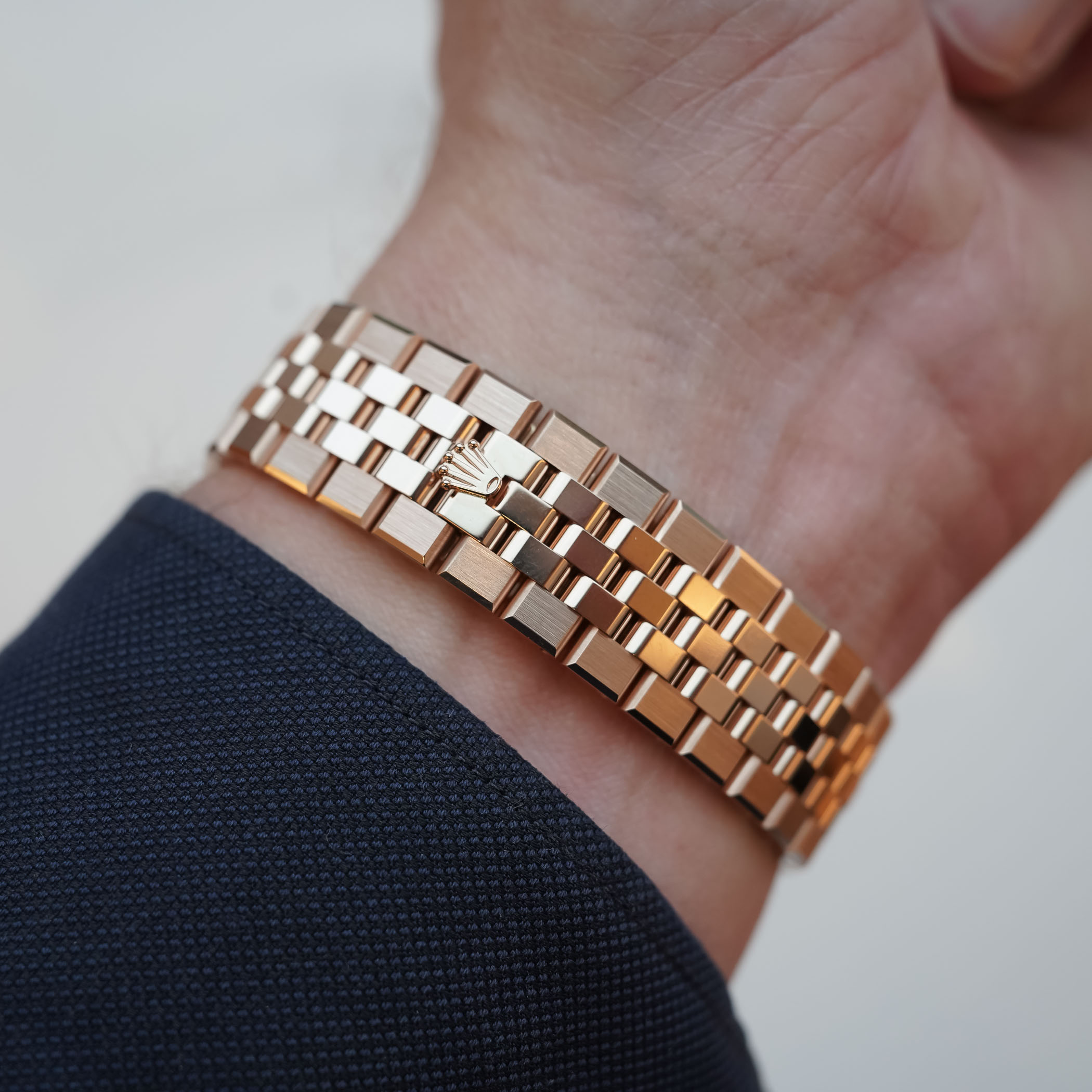


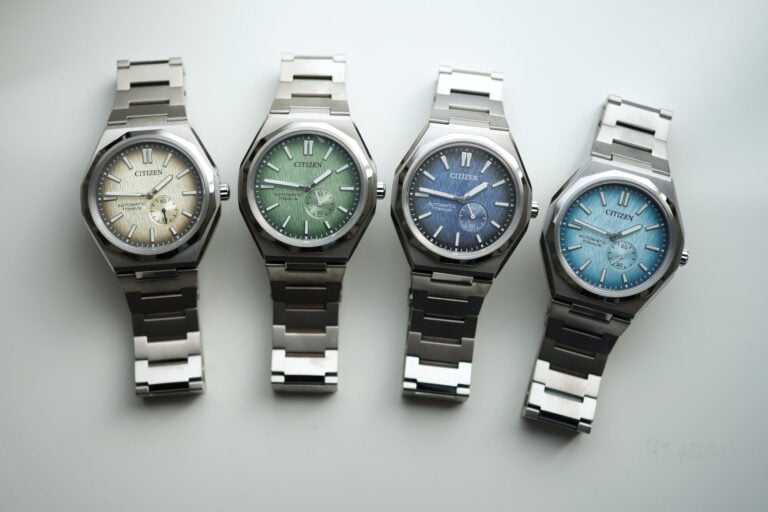
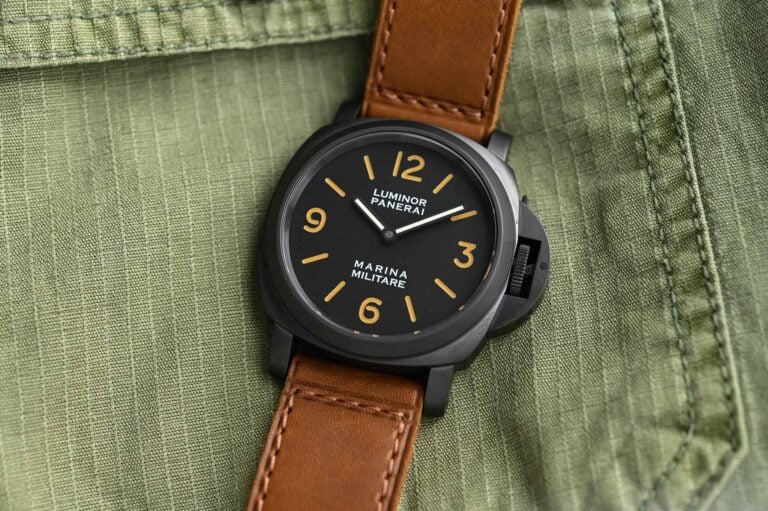
11 responses
Overpriced. Overdone. Undersized. It’s riding the hype wave at the moment but I predict this watch will be the first to come off the waitlist in the future. I travel a lot and I’ve visited several AD’s who behind the scenes, tell me they don’t like it. Very cool movement though. Groundbreaking even, but the outside looks like a tarted-up hot mess. The 40 will have the least sales because no one, who can comfortably wear a watch 40mm or larger, myself included, would ever be seen wearing this thing in public. I’ll stick with my SS GMT2 thankful that I can wear it any time, anywhere. This watch will only be a daily for a very small subset of collectors which makes it nothing more then a niche piece. Looking forward to seeing where the movement goes next though…stay tuned!
Even though I have not seen either watch in person (and most likely never will), your arguments seem valid.
What did Rolex give you in return for trying to use your useless influence to persuade the sheep?
To the first guy, listening to your AD about what watch you “should” buy is laughable because they don’t see a future of it. I’m getting one of these, seen it in person and definitely was impressed. May the watch you desire be your reasoning to own them
I tried both sizes at my local AD, and I must say that I agree with you. I liked the 36mm better, especially if you have a smaller wrist like I do. The integrated bracelet and the shape of the watch make the 40mm look and feel bigger than it is, unlike my 40mm Daytona which feels perfect.
The dial looks like the bathtub floor in a roadside motel…
I’ll stick with my Oysterquartz basking in the glory that it’s the most precise watch Rolex has ever made ?
With the plethora of other beautiful watches why, other than collectors, would spend money to buy one of these????
40 massively too big. Look guys I have a Rolex! 38mm would be much better if you want men who have to feel like men have a bigger watch than a lady would wear. Big fan of the oysterquartz so love the shape.
Any watch shaped like the OysterQuartz, or the old Omega Constellations, fit better on the wrist if they’re under 38mm.
Too many better alternatives at the price, but if I had to buy one, it would be the 36mm. The 40mm makes an already garish design seem almost vulgar.